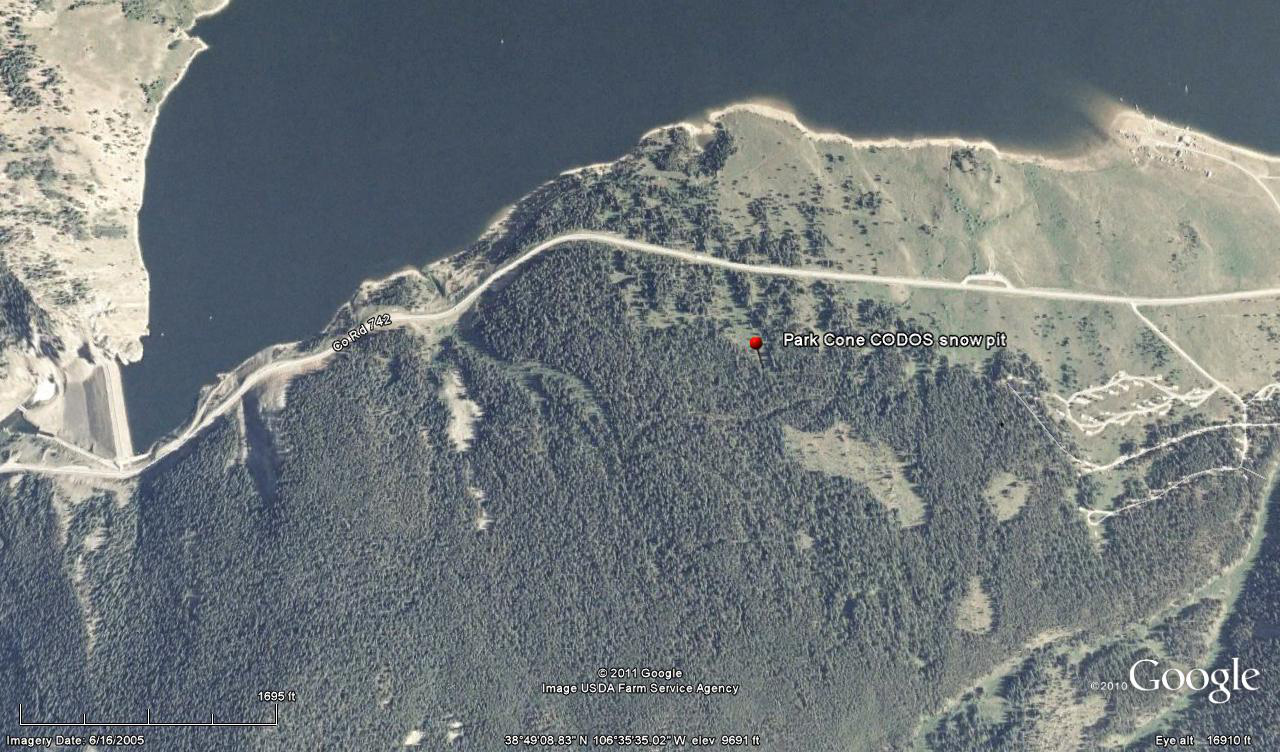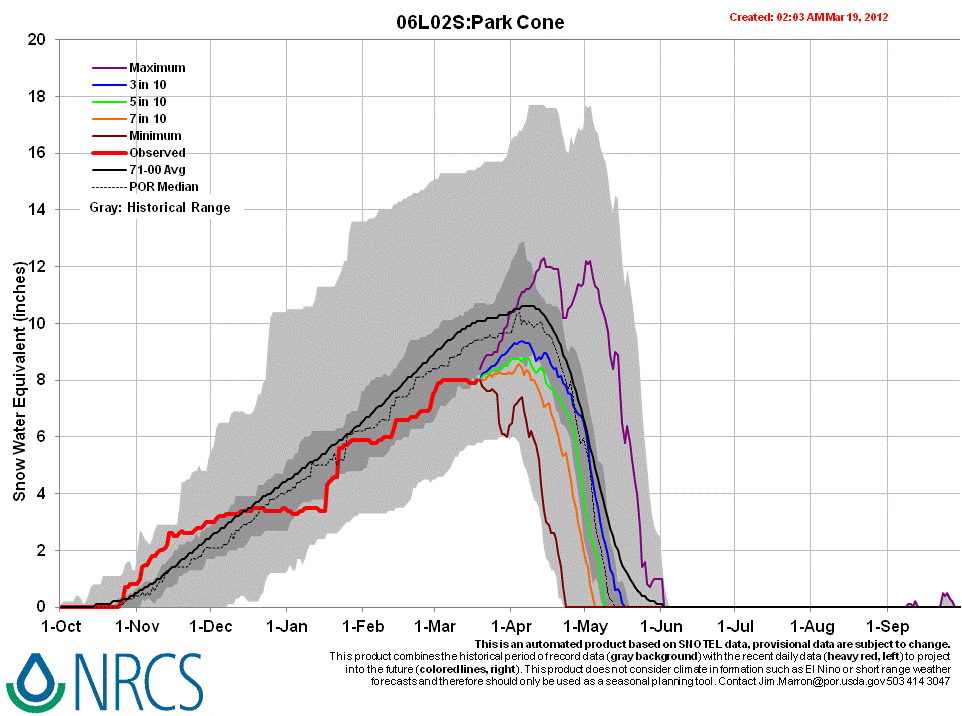 CODOS Update for Park Cone site:
CODOS Update for Park Cone site:
visited March 14, 2012
Summary | Snowpack | Melt Rate | Forecast | Earlier Updates | pdf
Summary
Dust layer D4 (March 6) was observed, with its characteristic brown/pink color, at the surface of the shallow snowcover at Park Cone and in the Taylor Reservoir vicinity. Melt had occurred at the snow surface but most of the snowpack remained cold and dry at this north-facing site. Since our site visit, a new D5 event (March 18) has landed on the D4 surface, entrained in a small accumulation of new snow. Radiative forcing of snowpack warming and snowmelt will resume and increase later this week.
SnowPack Discussion
Total snow depth in our snow profile (pdf) was just 28” and most of the snowpack consisted of very weak “depth hoar” grains; mean density of the snowpack was just 238 kg/m3 (23.8% water content). We plunged to the ground when stepping off our skis. Diurnal melt-freeze had occurred in the upper few inches of the snowpack, and the surface was wet at the time. However, the rest of the snowpack was dry and the coldest snow temperature was -7.5° C; the mean snow temperature was -3.7° C. D4 was apparent at the snow surface but no other dust layers were discernible lower in the snowpack.
Melt Rate
Park Cone Snotel has reported virtually static SWE since the D4 event, March 6, until receiving an inch or two of new snow Sunday, March 18, in association with D5. When D4 re-emerges, perhaps augmented by D5, energy absorbed by that dust will continue to accelerate the warming of the snowcover until becoming isothermal. At that time SWE losses would also accelerate, given that D5/D4 remains exposed at the snowpack surface.
Forecast
The National Weather Service expects sunny skies and unseasonably warm temperatures to return soon after the current storm clears (Tuesday). Under the combination of strong solar radiation and warm air temperatures later this week, settlement of any dusty new snow containing D5 will be very rapid and D5 will quickly merge with the D4 layer. Where snowpacks in this locale are already at or very near isothermal temperatures, solar energy absorbed by the emerging D4/D5 dust will begin and/or accelerate snowmelt rates and SWE losses. Where the snowpack retains cold content, energy absorbed by that dust will continue to accelerate warming of the snowcover. As always, the lowest elevation snowpacks (now generally isothermal) will most rapidly respond to radiative forcing.






